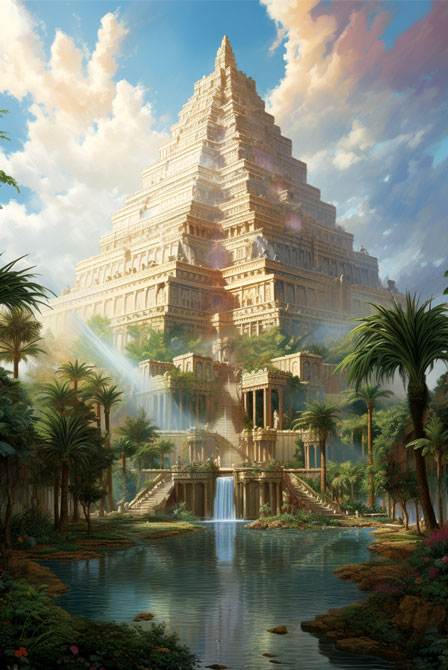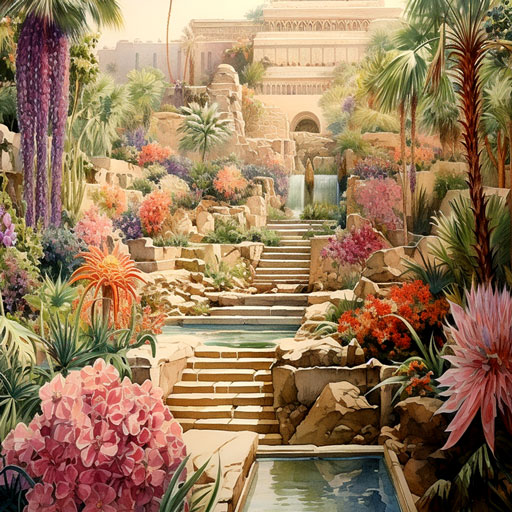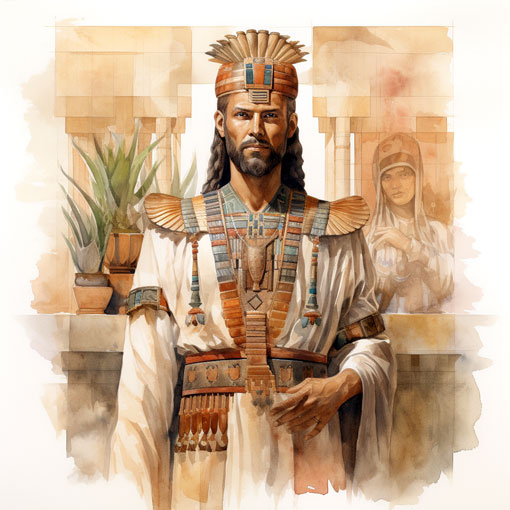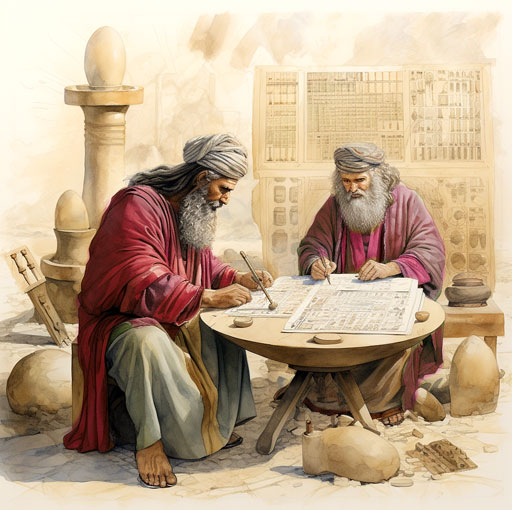Etemenanki
"But all the inhabitants had one language and one and the same words. ... And the Lord said: ... Let us go down and confuse their language so that no one understands the language of the other."Excerpt from Genesis 11, 1-9 II Tower of Babel-
The House of foundations of Heaven and Earth (Sumerian: Etemenaki) was a ziggurat in the city of Babylon, the dimensions of which reached the sky (by the standards of the time) and which some scholars believe to be the model for the Bible's verses about mankind's confusion of tongues.
"Henrietta, I just deciphered this clay tablet and found inconsistencies. The cuneiform character of the god Enki was carved here. But, that doesn't make any sense! The temple of Babylon was dedicated to Marduk, wasn't it?!"Ludwig von Amnitz-
At a Glance:
Temple complex Esagil of the god Marduk
1st Edification: 2nd millennium BC by Naram-Sin, king of Akkad
1st Destruction: 689 BC by Sin-ahhe-eriba king of Assyria
Height / edge lengths ca. 92 Meters
Floors: 8
Excavation: from 1913 Robert Koldewey
Brief historical outline
The first structure in honor of the highest Babylonian god Marduk was probably built around 2,250 BC during the reign of Naram-Sin after his grandfather Sargon I, conquered and destroyed Babylon.
In the 7th century B.C. Sin-ahhe-eriba conquered the city and boasted that it had leveled the ziggurat as well. His successors, including Ashurbanipal and Nebuchadnezzar II, rebuilt the city and the complex.
In the 5th century B.C. the complex fell into disrepair and was massively damaged by the Persian king Xerxes I. After Xerxes was defeated by Alexander the Great, he had the complex completely demolished in order to build a new one. However, due to his early death, the complex was never renewed. Only at the beginning of the 20th century was the ziggurat excavated under the direction of the German archaeologist Robert Koldewey.
The architecture of the Etemenanki
The ziggurat was built in a square shape and in eight tiers. The edge length of the 1st stage and the total height of the system was about 92 meters. A long staircase leads from the meeting place to the entrance on the third step. More stairs connected the higher steps together.
Mud bricks were used for the construction, which the builders sealed with tar. Artists decorated the outer bricks with colored glazes and various mythical beings and legends. Plateau gardens were laid out on the first two tiers of the ziggurat. Starting from the Euphrates, an underground canal was used to irrigate the exotic plants and trees. The water was fed back into the river via a small waterfall on the first step.
The interior of the ziggurat
1st level: Kitchen, storage, laundry, quarters for temple guards and temple servants
2nd level: Living quarters of the priesthood, acolytes and apprentices of the guild
3rd level: Temple rooms with altars for other Babylonian gods and their places of sacrifice
4th Level: Scriptorium, Hospital, Library of the Temple Service
5th level: Rooms of Enki's Guild for keeping secrets
6th level: Living quarters of the higher guild members and the high priest
7th level: Cella with marble columns and gilded cedar beams with statue of the god Marduk made of lapis lazuli and alabaster
8th level: Astrolaboratory
Nemrud
Nemrud was a bright and inquisitive child from an early age, which is why he was accepted into the guild as an apprentice by the high priestess in Nineveh and assigned to the pillar of mysticism.
He finished his apprenticeship at the top of his class, which is why he was allowed to start the teaching journey to Elaqitan before being appointed an acolyte. When he came back after a year, he had changed. Nemrud had acquired so much knowledge of elemental magic that he became a Homo Elaqitanii.
Upon his return, he made every effort to climb the guild's ranks until, at the age of 25, he was appointed High Priest. Unfortunately, the magic of the elements in Naharin wasn't that strong, so Nemrud needed a source for the magic.
Mankind's Confusion of Languages
When Naram-Sin (2260–2223 BC) was Great King of Akkad, one of his high priests was named Nemrud. In his function he knew the secrets of the Guild of Enki and advised the king on all matters. In his thirst for power, Nemrud persuaded the king to build a huge temple that would reach the clouds. The construction of the ziggurat took seven years and attracted many people from all over the area to try their luck here on the construction site.
Knowing the workings and secrets of the portals, Nemrud traveled between the two worlds undetected. He managed to have five Elaqitans follow him to Naharin and imprisoned them in a dungeon beneath the ziggurat, where he tortured and mutilated them. However, the power of good elemental magic turns negative when the Elaqitans are denied nourishment from the Tree of Elements or their bodies are mutilated.
Concentrating their remaining power in the dungeon, the Elaqitans unleashed five brilliant beams of light that ripped through the ziggurat into the temple that stood on top of the ziggurat. From there, the magic of the light spread to within nearly 200 kilometers to the city of Uruk in the south, erasing the Sumerian language from people's memories and replacing it with many variations of their own languages.
Only further south was the Sumerian not wiped out. The mystic keepers and sages of Enki's Guild developed the legend of the Tower Building and Sumerian was gradually supplanted by other languages and only still spoken within the Guild.
At the same time, this event set in motion a migration of peoples in all directions, spreading humanity and its previous achievements all over the world.













I see what you did there - and again: I like it.
and thus a legend was born ;)
-Worldanvils: Institutions of Learning
-Worldanvils: SUMMER CAMP
Ah, I didn't know if the Nimrod reference would be immediately understood, but thank you.